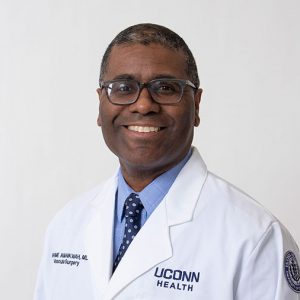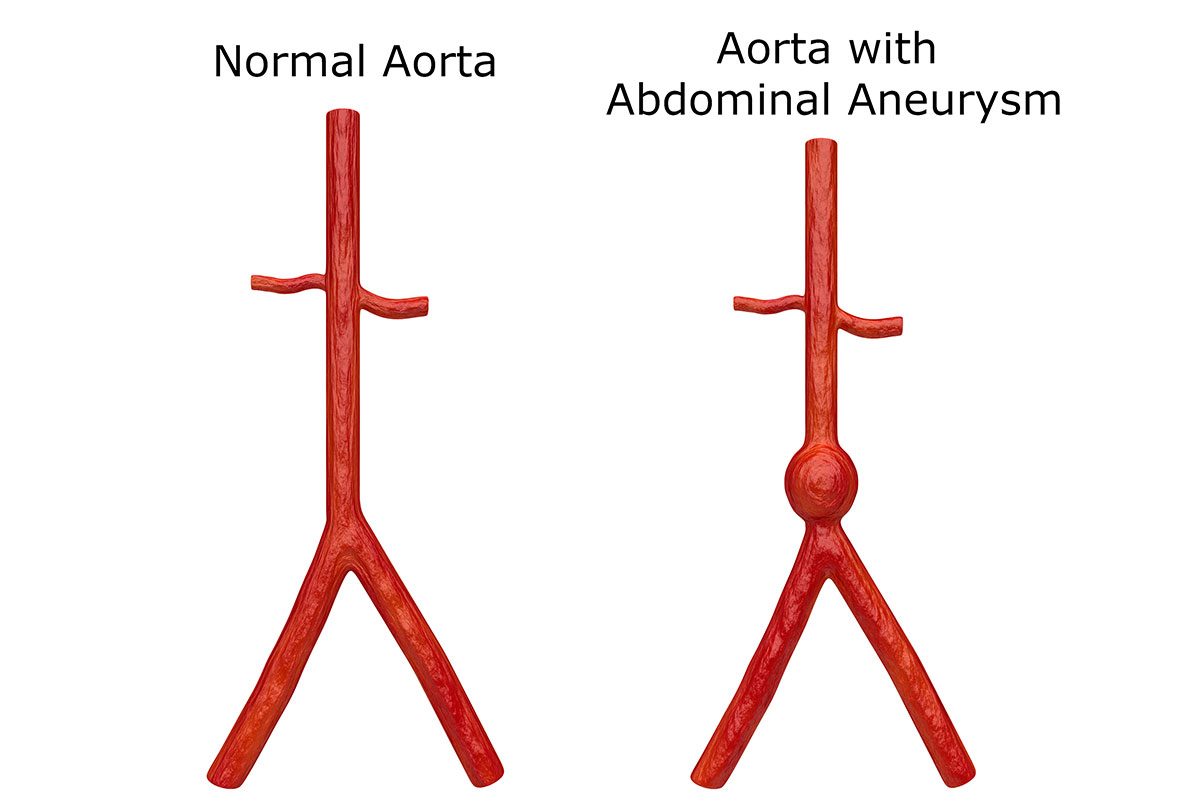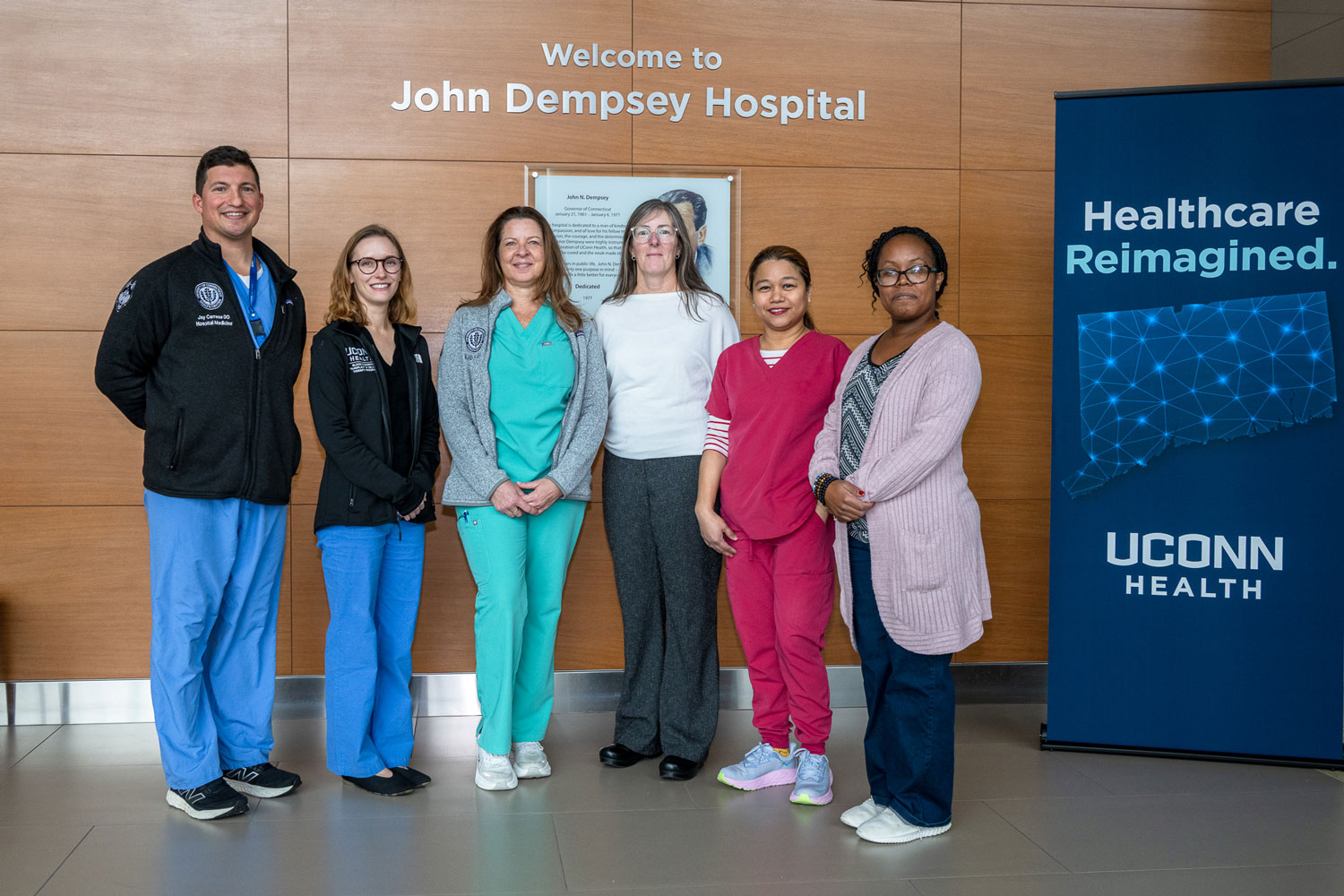Don’t let his simplified explanation fool you. The new chief of vascular and endovascular surgery at UConn Health brings a very complex set of skills to treat a range of vascular conditions.
“If you think of us as glorified plumbers, we’re basically putting in a new piece of PVC in the area of where the old PVC has broken down,” Dr. Kwame Amankwah says, describing open surgery to treat an abdominal aortic aneurysm.
An abdominal aortic aneurysm is one type of aneurysm, and probably the most common. Open surgery is one way to treat it, and becoming less common.

An aneurysm is an abnormality in a blood vessel where it becomes misshapen and stretched. As the abnormality grows in size it becomes more prone to leaking or rupturing, at which point it turns into a medical emergency. But until then they are generally asymptomatic.
“If you think of the aorta, the big vessel that comes off your heart and travels through your abdomen, it looks like a tube, and this tube has now gotten bigger and looks more like a balloon,” Amankwah says. “And that’s what we’re calling the aneurysm.”
Screening for an aneurysm can be life-saving. Primary care physicians can detect something suspicious with a physical exam and order an imaging test. Being male, being over age 65, having a family history of aneurysms, and having a history of smoking are among the characteristics of a good candidate for screening. Aneurysms are more common in men than women.
An alternative to open surgery is an endovascular procedure, a less invasive approach in which the surgeon places a stent in the vessel to redirect the blood flow around the section that’s ballooning.
“There’s no open incision,” Amankwah says. “We access the vessels in a way similar to when you’re getting an IV put into your vein when you’re getting a blood draw, but we do this through the vessels in the groin area. It’s through very small punctures to get our device in. We’re doing this under X-ray.”
Patients often can go home within 48 hours of an endovascular procedure.
In addition to treating aortic aneurysms, UConn Health’s vascular surgeons offer treatment options for carotid artery disease, peripheral artery disease, renal and mesenteric artery disease, and vein disease including varicose veins and deep vein thrombosis.
More information about vascular and endovascular surgery at UConn Health is available at health.uconn.edu/vascular-surgery. To schedule an appointment, call 860-679-8488.



